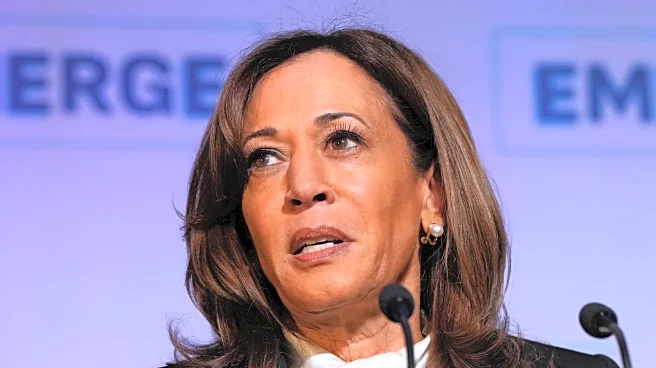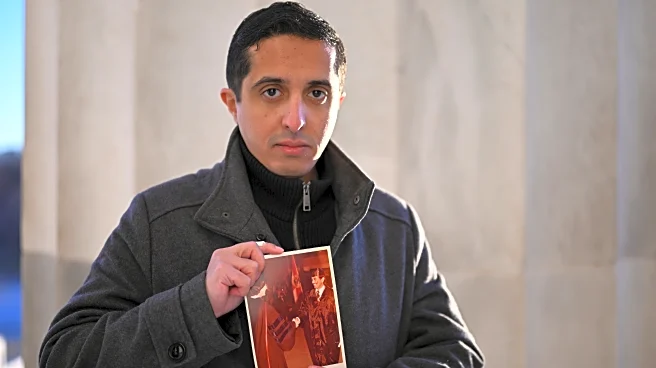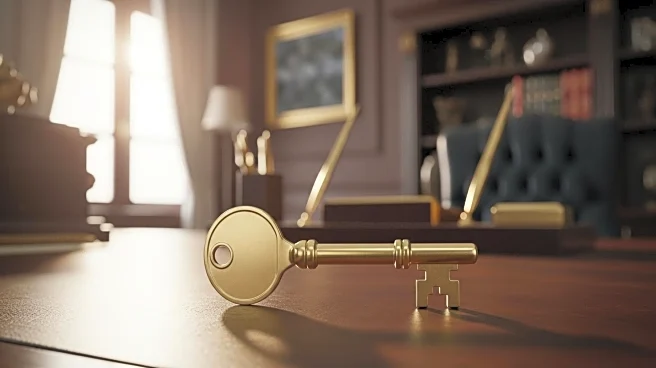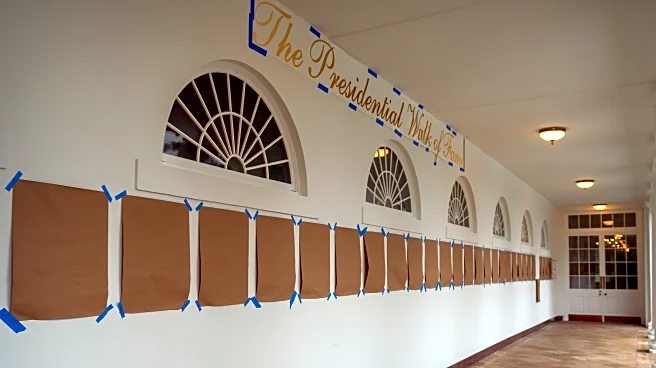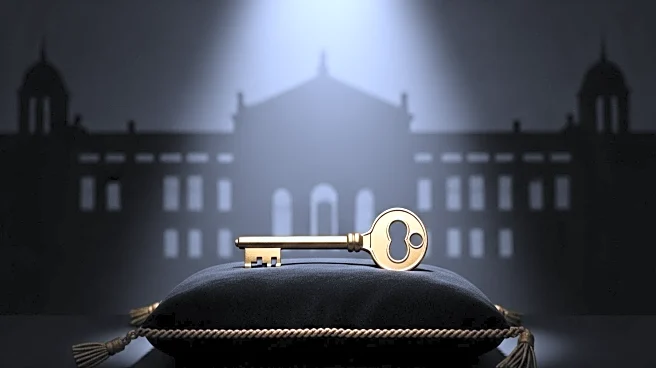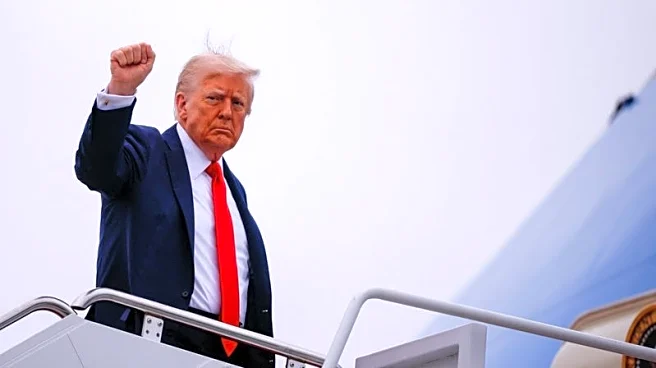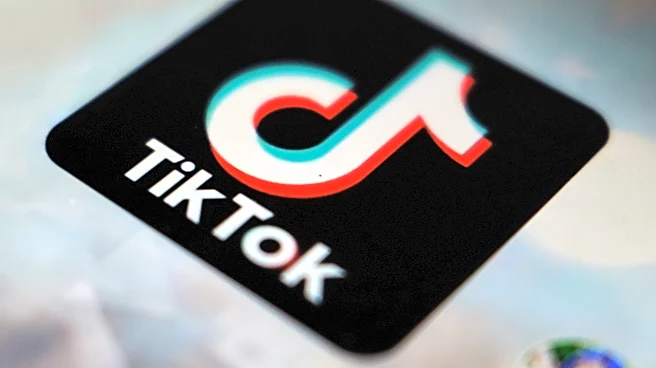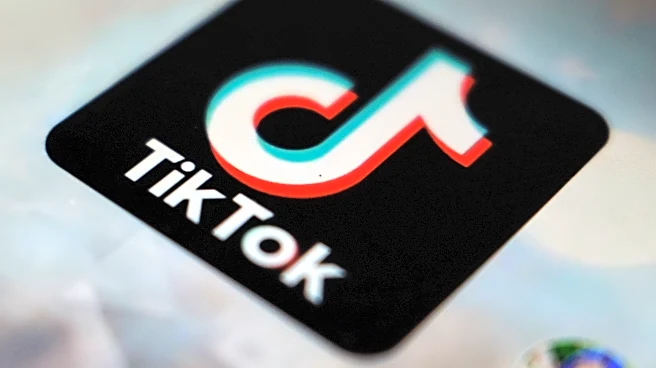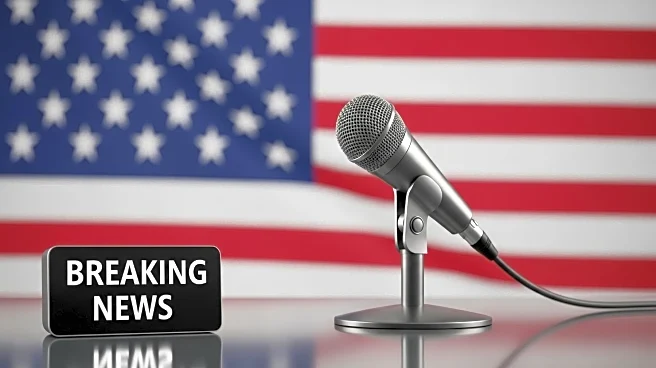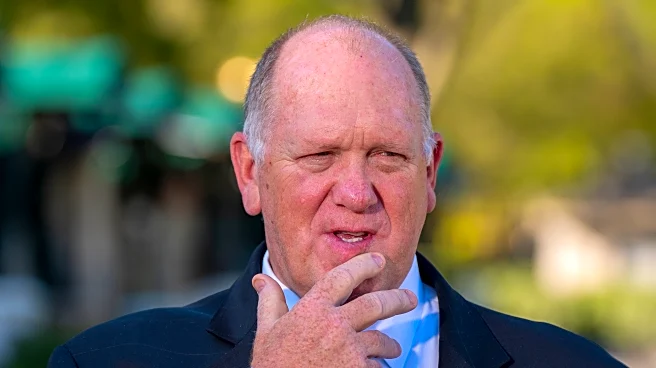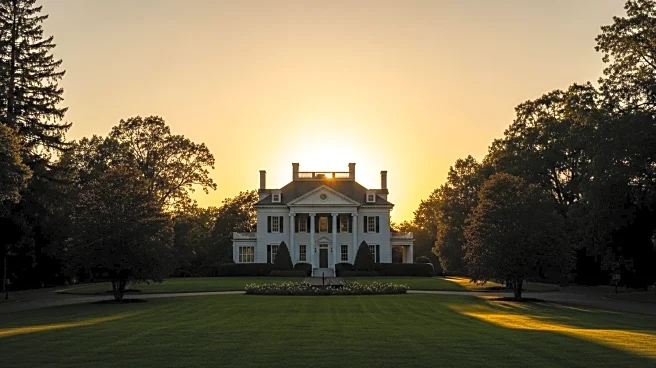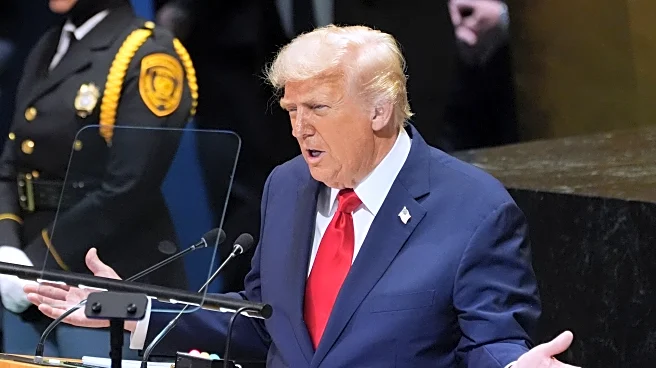What is the story about?
What's Happening?
The White House has introduced a new 'Presidential Walk of Fame' near the Oval Office, showcasing framed portraits of former U.S. presidents. However, the portrait of President Joe Biden is notably absent, replaced instead by an image of an autopen signing his name. This move has stirred controversy, as President Donald Trump has previously accused Biden of using an autopen to sign significant documents, including pardons. The decision to replace Biden's portrait with an autopen image has raised questions about the intent and implications behind this choice.
Why It's Important?
The replacement of President Biden's portrait with an autopen image in the White House could have significant political implications. It may be perceived as a symbolic gesture questioning the legitimacy or authenticity of Biden's presidency, potentially fueling partisan debates. This action might also impact public perception of the current administration, as it aligns with previous claims made by President Trump regarding Biden's use of an autopen. The controversy could further polarize political discourse and influence public trust in presidential actions and decisions.
What's Next?
The decision to replace Biden's portrait may prompt reactions from political leaders, media, and the public. It is likely to be a topic of discussion in political circles, potentially leading to statements or actions from the Biden administration to address the controversy. The move could also influence future decisions regarding presidential representations and the symbolism associated with the 'Presidential Walk of Fame.' Stakeholders may seek clarification or justification for the choice, and it could become a point of contention in upcoming political debates.
Beyond the Headlines
This development highlights the ongoing tensions and divisions within U.S. politics, reflecting deeper issues of legitimacy and representation. The use of an autopen image instead of a traditional portrait may raise ethical questions about the portrayal of presidential authority and the respect accorded to sitting presidents. It underscores the cultural and symbolic power of presidential imagery and its role in shaping public narratives and historical records.
AI Generated Content
Do you find this article useful?


